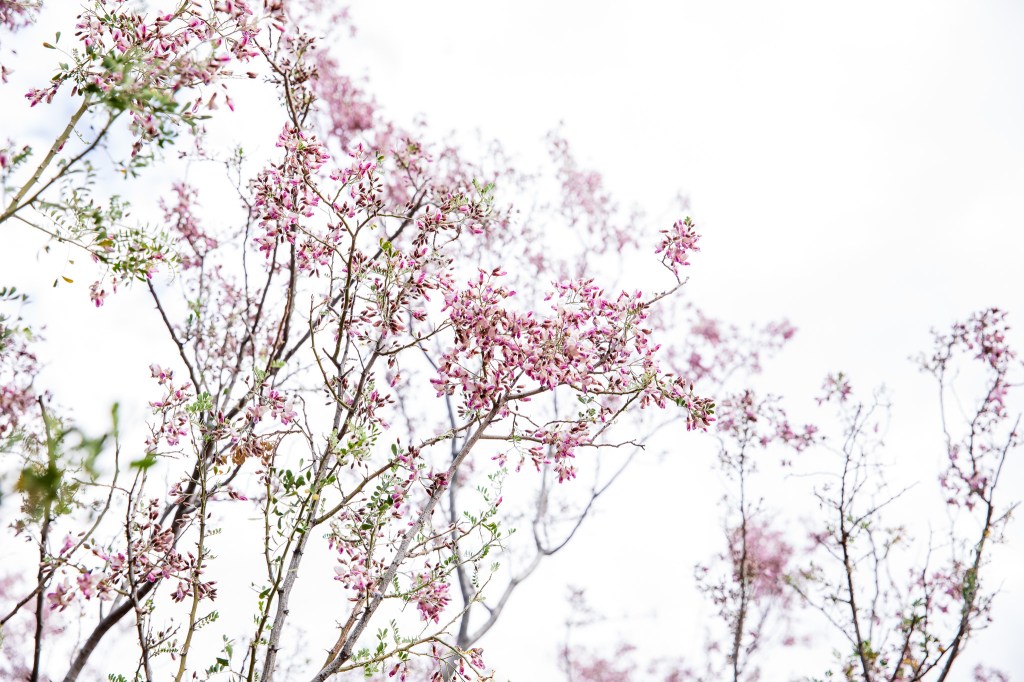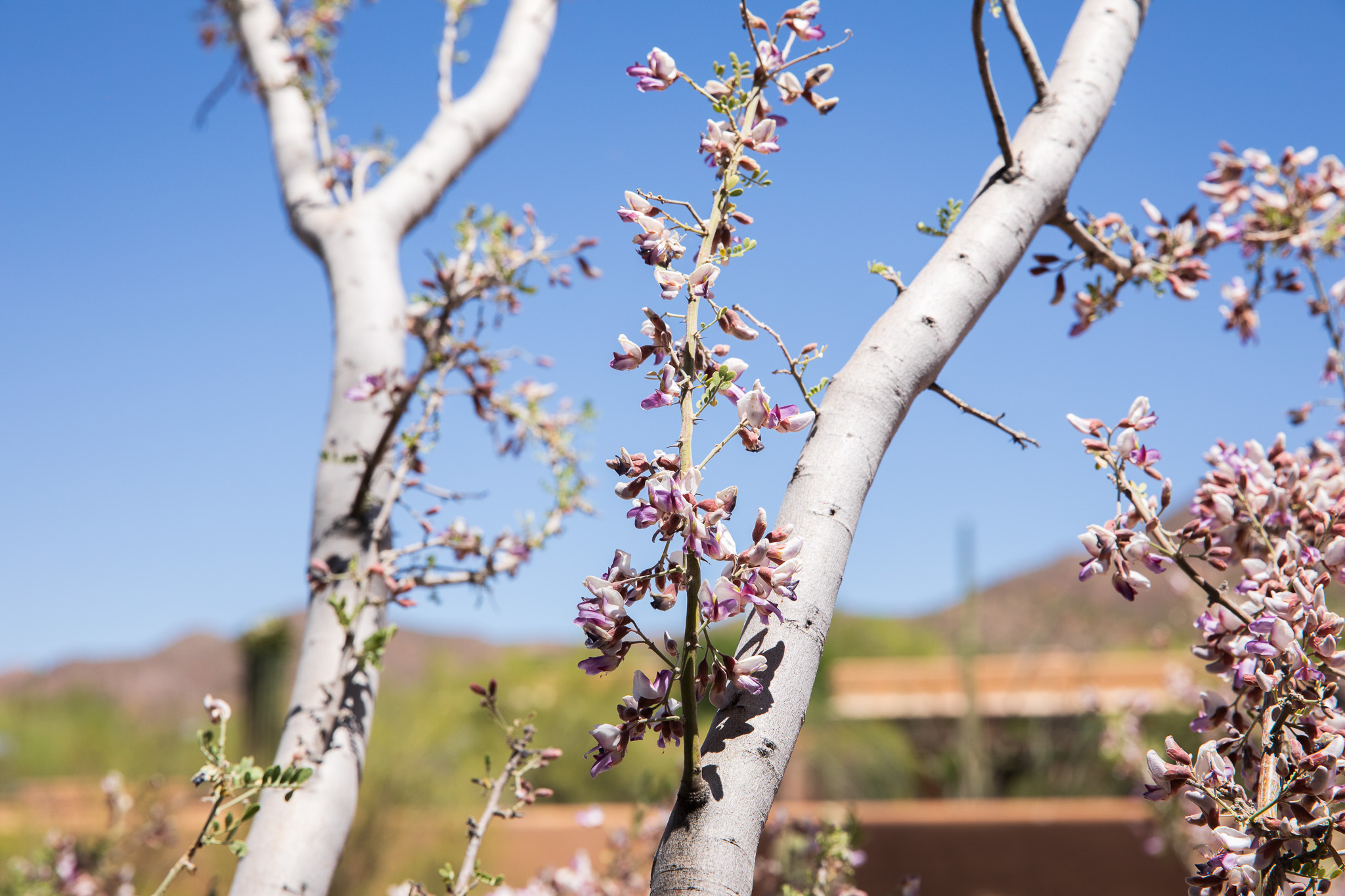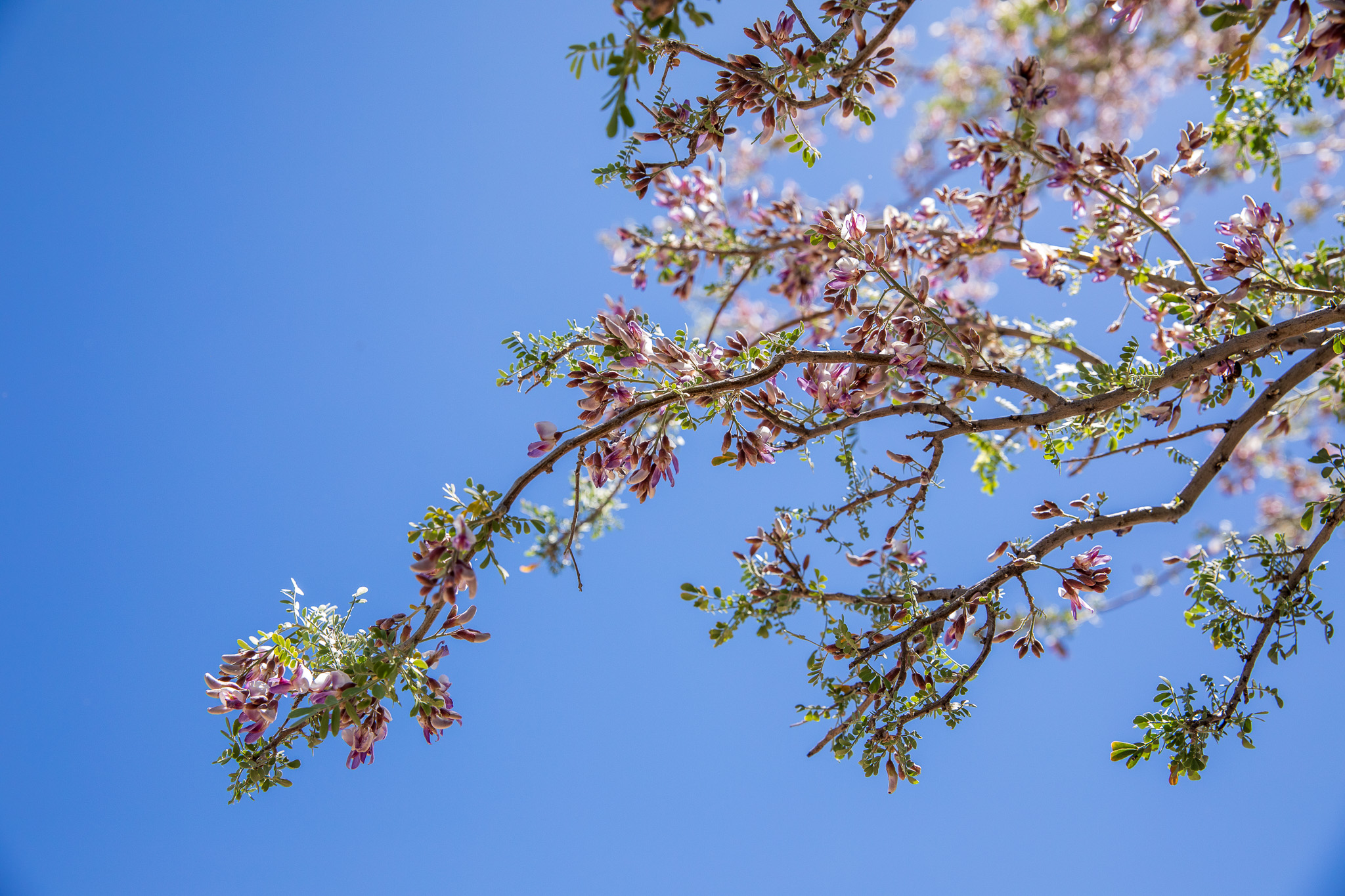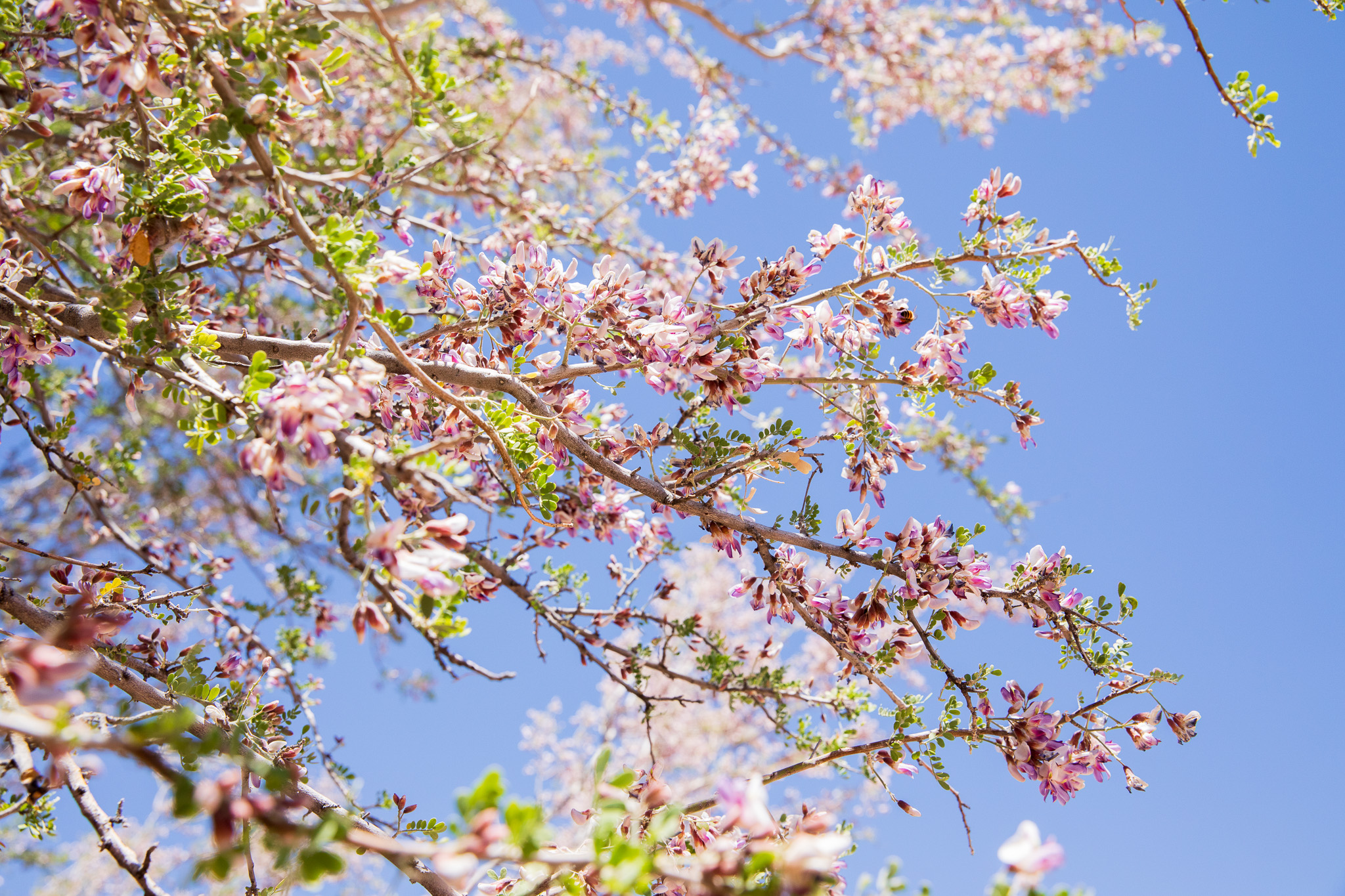This post is part four of an ongoing series exploring the science and ethnobotany of plants found throughout the Sonoran Desert region. The first four plants in this series are the Mexican trees Taxodium mucronatum (ahuehuete/Montezuma cypress), Randia echinocarpa (papache/papachi), Forchhammeria watsonii (jito), and Olneya tesota (opo/ironwood). For each plant, we are sharing a blog post in both Spanish and English, and a poem, all written by Horticulturist Emmanuel. English translations are provided by Desert Museum staff. Hear Emmanuel recite the poem to gorgeous video footage of the plant over at our Instagram account. Now, let’s learn about el opo, the hat thief!







Opo: Olneya tesota
Hoy en día, esta especie es mejor conocida como árbol de palo fierro, debido a la alta densidad de su madera que asemeja la dureza del fierro. Opo es el nombre original con el que la etnia ópata se refería a esta particular planta. El nombre “opo” figura en el nombre del municipio de Opodepe: valle del palo fierro, y de la Sierra de Oposura: lugar de palo fierro. La distribución del Opo está restringida a planicies, arroyos y piedemontes del Desierto Sonorense, siendo una especie bandera de la región.
Morfología y filogenia
Es una de las varias leguminosas leñosas que son típicas del desierto sonorense, sin embargo, tiene suficientes diferencias filogenéticas para ser considerado un género mono especifico, Olneya tesota. Se distingue por presentar hojas compuestas que crecen en pares, con pequeños foliolos elípticos de color verde opaco, inflorescencias que crecen en cualquier lado del tallo (no solo al final de una rama) y las vainas son redondeadas. Estos árboles crecen lentamente y pueden llegar a medir hasta 50 pies de alto por 50 pies de ancho. Pocas actividades son más placenteras que sentarse bajo un gran opo florido, con sus flores zigomórficas color lavanda-rosa.
Ecología
Es una especie clave para el ecosistema desértico. Genera un microclima que coadyuva a la existencia de cientos de especies de plantas, artrópodos, microorganismos, reptiles, aves y demás. Es una dinámica de isla de fertilidad, en la cual se mantienen temperaturas menos extremosas, un mayor nivel de humedad y materia orgánica, la cual sirve de refugio, alimento y fertilizante natural. La fenología del opo es interesante, en primavera deja caer sus hojas para luego florecer, la floración dura solo un par de semanas en las cuales, ciertas especies de abejas aprovechan el polen. Las vainas que crecen tras la polinización, son de 1-3 pulgadas, producen de una a ocho semillas que son comestibles siendo jóvenes, pero con la madurez se vuelven realmente duras. Lo más conveniente es que el fruto del opo es de los primeros en estar disponible para alimentar a la fauna.
Etnobotánica
Las flores y semillas son comestibles y existen platillos tradicionales basados en ello. La madera es igualmente utilizada como muy buena leña para cocinar, para tallar herramientas y vajillas, pero además para tallar figuras y esculturas. Esto último ha causado una disminución en las poblaciones de opo de Sonora, especialmente en árboles viejos que fueron talados durante todo el siglo pasado, sin algún plan de manejo sostenible e indiscriminadamente, por esta razón es muy difícil encontrar un árbol de opo colosal en las planicies de Sonora, entre Guaymas y Cucurpe.









Opo: The Ironwood Tree
Nowadays, this species is better known as the ironwood tree, due to its highly dense wood resembling the strength of iron. Opo is the original name with which the Opata ethnic group referred to this particular plant. The name “opo” appears in the names of two municipalities in Sonora – Opodepe (Ironwood Valley) and Sierra de Oposura (Ironwood Place). The distribution of the Opo is restricted to plains, streams, and foothills of the Sonoran Desert, and it is a keystone species of the region.
Morphology and Phylogeny
It is one of several woody legumes that are typical of the Sonoran Desert, however, Olneya tesota has enough phylogenetic differences to be considered the only species in its genus. It is distinguished by having compound leaves that grow in pairs, with small opaque green elliptical leaflets, inflorescences that grow on any side of the stem (not just at the end of a branch), and the pods are rounded. These trees grow slowly and can reach up to 50 feet tall by 50 feet wide. Few activities are more pleasant than sitting under a large flowering opo, with its zygomorphic lavender-pink flowers.
Ecology
It is a key species in the desert ecosystem. It generates a microclimate that contributes to the existence of hundreds of species of plants, arthropods, microorganisms, reptiles, birds and more. It creates a fertility island dynamic, in which less extreme temperature, a higher level of humidity and organic matter are maintained, which serves as shelter, food and natural fertilizer. The phenology of the opo is interesting – in spring it drops its leaves and then blooms, and the flowering lasts only a couple of weeks in which certain species of bees take advantage of the pollen. The pods that grow after pollination are 1-3 inches long and produce one to eight seeds that are edible when young but become really hard as they mature. The opo fruit is one of the first to be available for fauna during this season.
Ethnobotany
The flowers and seeds are edible, and there are traditional dishes based on them. The wood is used as very good firewood for cooking, for carving tools and tableware, and also for carving figures and sculptures. In Sonora, the latter has caused a decrease in opo populations, especially in old trees that were cut down throughout the last century. For this reason, it is very difficult to find a colossal opo tree at the Sonoran plains between Guaymas and Cucurpe.